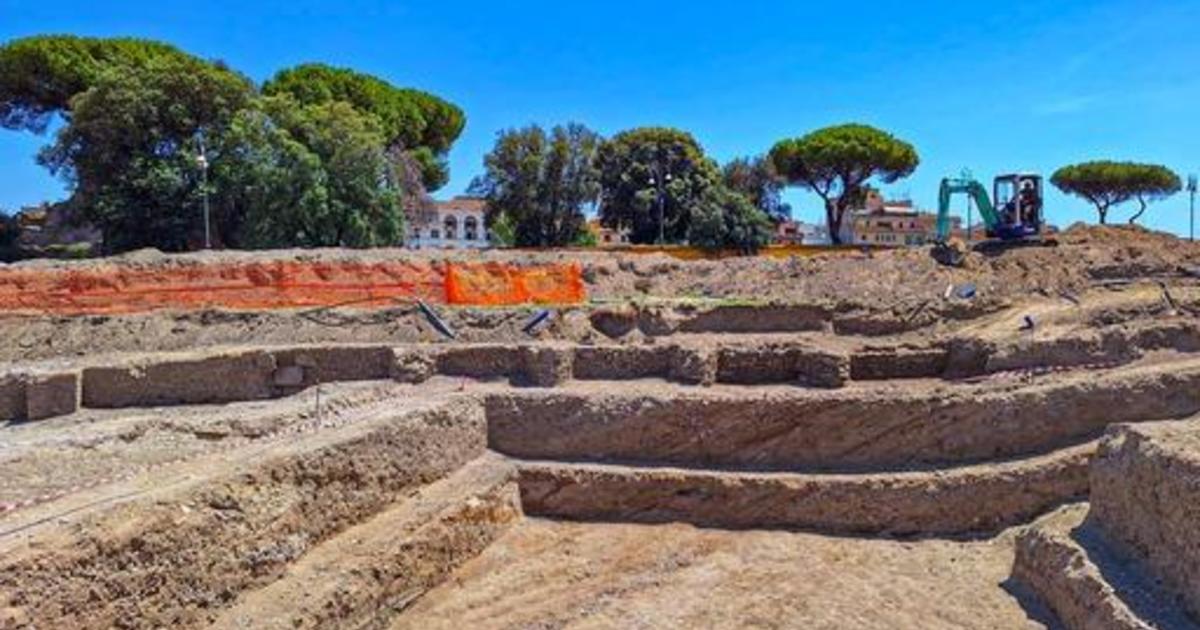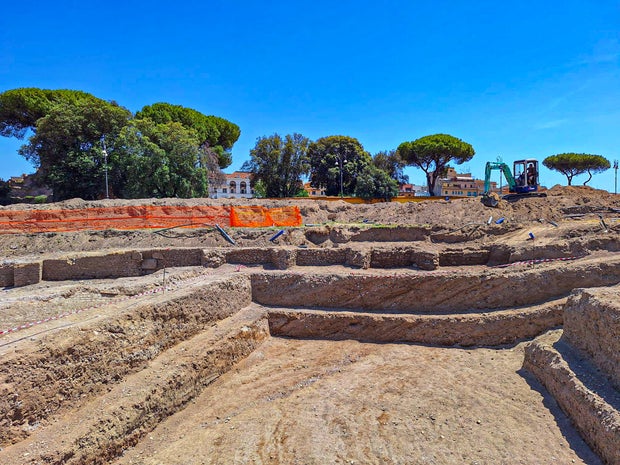Archaeologists in Rome may have uncovered the remains of a medieval palace for popes that long preceded the Vatican, officials announced on Wednesday. If the ancient structure did in fact serve the purpose they believe it does, then learning more about it could provide new insight into the earlier eras of the papal seat in Italy and the power struggles that shaped it over time.
While excavating a piazza around the Archbasilica of St. John Lateran in central Rome, a team of archaeologists happened to discover an advanced hidden structure, surrounded by walls that could have been built as early as the 9th century A.D., and as late as the 13th century, the Italian Ministry of Culture said in a news release.
The wall was potentially constructed as a means to physically create and protect the patriarchate of the time, which consisted of the patriarch, or leader, as well as his office. It may have encircled a castle or other fortified structure where various popes were said to have lived during the years it still stood.
Italian Culture Ministry
Italian officials said that the remains could have ties to the former Roman Emperor Constantine, who would have begun to oversee construction on the building, in his own vision, in the 4th century. Constantine ordered the construction on the same site that held barracks for the emperor’s mounted card. Although the patriarchate was first limited to only a basilica — which was huge on its own — the area was expanded and renovated multiple times throughout the Middle Ages and ultimately became the papal seat until conflict with France temporarily pushed the popes out of Italy in 1305. When they returned, the papal seat was transferred to the Vatican.
What archaeologists found beneath the square in Rome marked the first extensive excavation of its kind on the property, and with that, a number of opportunities to learn about Italy’s history and its connections to the Pope and Catholicism.
“The new discoveries in Piazza San Giovanni in Laterano are yet another demonstration of the richness of the territory of Rome, an inexhaustible mine of archaeological treasures,” said Italian Culture Minister Gennaro Sanguiliano in a statement.
“Every single stone speaks to us and tells its story: thanks to these important discoveries, archaeologists will be able to learn more about our past. I would like to express my satisfaction for the commitment and passion that researchers are putting into their work. It is essential to combine the protection of our history with the need to protect and modernize the urban fabric,” the statement said.
The basilica structure that existed within the borders of the walls found in the excavation took a long period of time to plan, build and renovate, according to the culture ministry. During that period, Rome faced intermittent raids from neighboring adversaries as well as conflict within the city of Rome itself, as aristocratic people vied for access to the Italian throne.
After the papal seat was returned to Italy — having been pushed from there to Avignon for decades between 1309 and 1377, the terms of seven consecutive popes between 1309 and 1377 — it was ultimately transferred to the Vatican.

